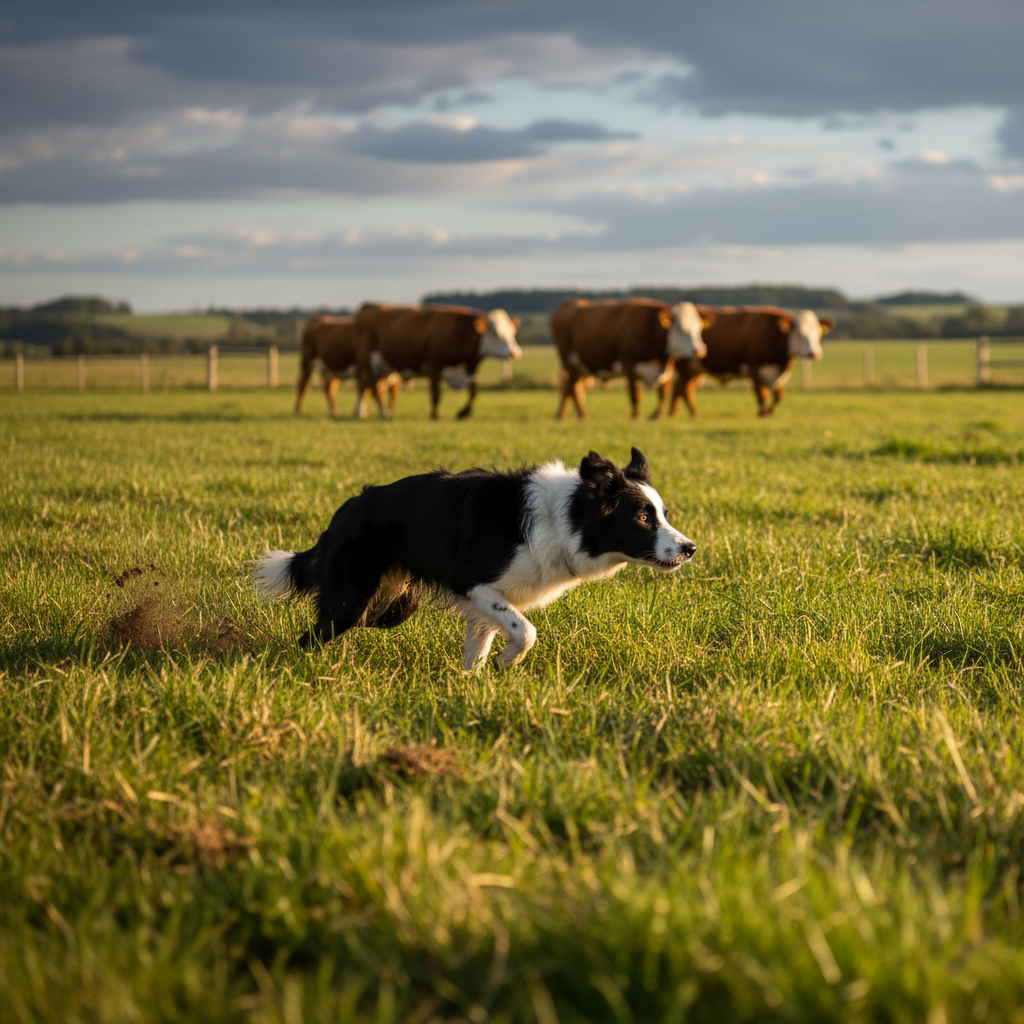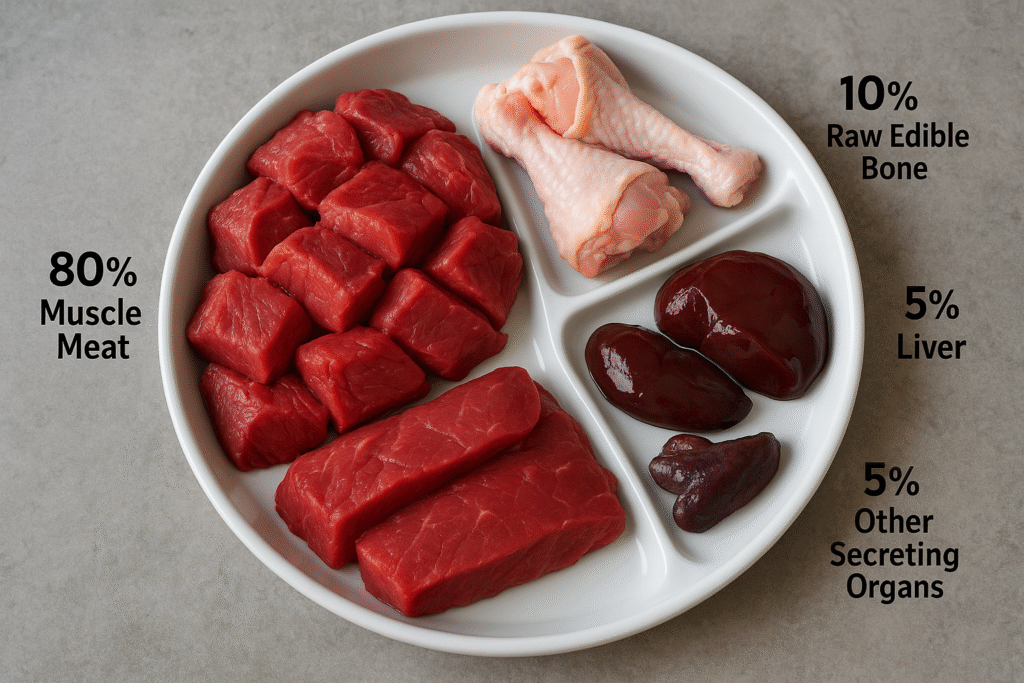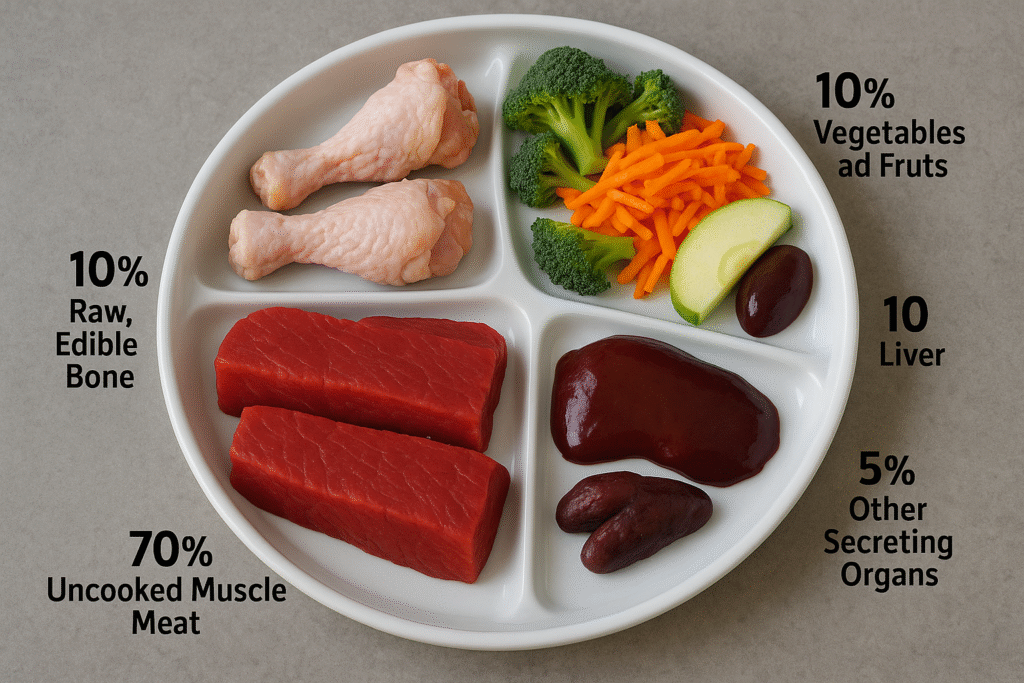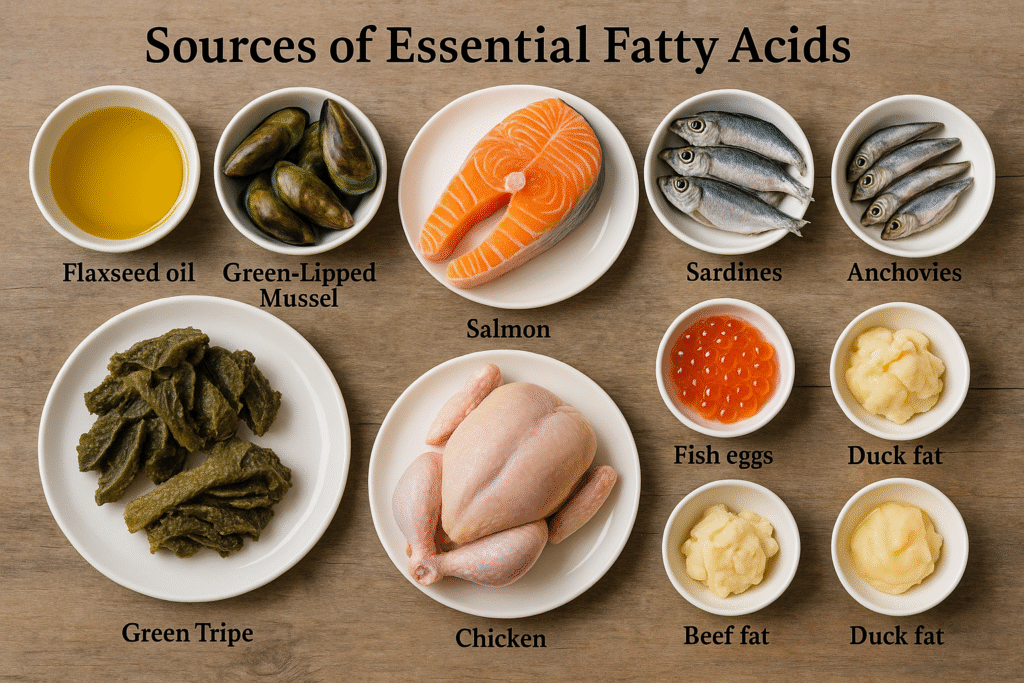
Biologically Appropriate Raw Food (BARF) or Prey Model Raw (PMR), which involves feeding your dog a raw diet to imitate the diet their wild ancestors ate. When you do it correctly, this method can offer your dog benefits, including improved digestion, healthier skin and coat, increased energy levels, and effective weight management. However, creating a balanced raw diet requires careful planning and a good understanding of essential nutrients to ensure your dog gets all the necessary nutrition.
A widely accepted starting point for creating a balanced raw diet is to follow specific ratios that ensure adequate intake of proteins, fats, vitamins, and minerals. Always consider that the needs of dogs may be different due to factors like age, activity level, and health status. Having considered this, the following general guidelines are commonly recommended.
The 80-10-5-5 Approach (Prey Model Raw)
This ratio serves as a basic guideline related to the Prey Model Raw diet, which focuses on using whole prey parts.
80% Muscle Meat: Muscle meat is the core of the raw diet, providing essential proteins, amino acids, and fats. Sources include beef, chicken, lamb, turkey, and pork. you should try to include a variety of meats to give your dog a well-rounded intake of nutrients.
10% Edible bone: Bones supply calcium and phosphorus, which are essential for maintaining skeletal health. Always use raw, edible bones suitable for your pet’s size to prevent choking or dental issues. Examples include chicken necks, wings, and lamb ribs. Never feed cooked bones to your dog. They can cause serious internal injuries because they often splinter.
5% Liver: Liver is packed with vitamins and minerals, especially Vitamin A, B vitamins, iron, and trace minerals. Because of its high nutrient content, use it in moderation.
5% Other Secretory Organs: This category includes organs such as the kidneys, spleen, pancreas, and reproductive organs. These provide a diverse range of nutrients not typically found in muscle meat or liver. Go for variety in this category; however, if sourcing different secretory organs is challenging, you can increase the allocation to liver while still ensuring some diversity in the diet.
Incorporating Fruits, Vegetables, and Supplements (BARF Model Raw)
The BARF model may also include a smaller portion of fruits, vegetables, and sometimes supplements. This offers a more comprehensive approach by considering plant matter that early canines may have eaten indirectly, such as through the stomach contents of their prey.
If you choose to include fruits and vegetables in your dog’s diet, aim for them to make up about 5-10% of the overall intake. These should be puréed or finely chopped to help your dog digest them, since dogs have shorter digestive tracts compared to omnivores. Good options for fruits and vegetables include:
Vegetables: Leafy greens (such as lettuce, spinach, and kale), broccoli, carrots, pumpkin, sweet potatoes (cooked and cooled), and zucchini.
Fruits: apples (seedless), berries, and bananas.
Never give dogs avocado, raisins, onions, garlic, or grapes because they are toxic to dogs.
Essential Fatty Acids and Supplements
While a varied raw diet can provide many necessary nutrients, specific essential fatty acids and supplements may further enhance your dog’s health:
Omega-3 Fatty Acids: Fish oil from sources such as sardines, mackerel, anchovies, and salmon is an excellent source of EPA and DHA. They are necessary to maintain a healthy coat, support cognitive function, and promote joint health. Be careful to choose high-quality, fish oil and please be sure that it is mercury-tested.
Vitamin E: Often recommended alongside fish oil to prevent oxidation.
Probiotics and Digestive Enzymes: These supplements can support gut health, especially during the switch to a raw diet or for dogs with sensitive stomachs.
Green Lipped Mussel: This naturally provides glucosamine and chondroitin, which help support joint health.
Sample Daily Meal Plan (for a 50-pound adult dog, 2.5% of body weight)
- Total Daily Intake: 1.25 lbs. (20 ounces)
- Muscle Meat (80%): 16 ounces (e.g., ground beef, chicken thighs, lamb stew meat)
- Edible bone (10%): 2 ounces (e.g., chicken neck or a couple of chicken wings)
- Liver (5%): 1 ounce
- Other Secretory Organ (5%): 1 ounce (e.g., kidney, spleen)
- Optional Fruits/Vegetables (5-10% of total diet, subtracted from muscle meat): 1-2 ounces (e.g., puréed pumpkin or mixed greens)
Of course, this is only a sample plan. It is important to customize your dog’s diet based on their individual needs. Consider factors such as body weight, age, and activity level. Senior dogs, pregnant or nursing females, and puppies have different dietary requirements.

Conclusion
A balanced raw diet can be a highly beneficial way to nourish your dog, aligning with their natural physiological needs. However, balance is crucial. By following the recommended ratios, sourcing high-quality ingredients, maintaining good hygiene, and continually educating yourself, you can confidently provide your canine companion with a diet that promotes their optimal health and well-being. Always consult with a veterinarian experienced in raw feeding to ensure the diet fits your individual dog’s health requirements.




